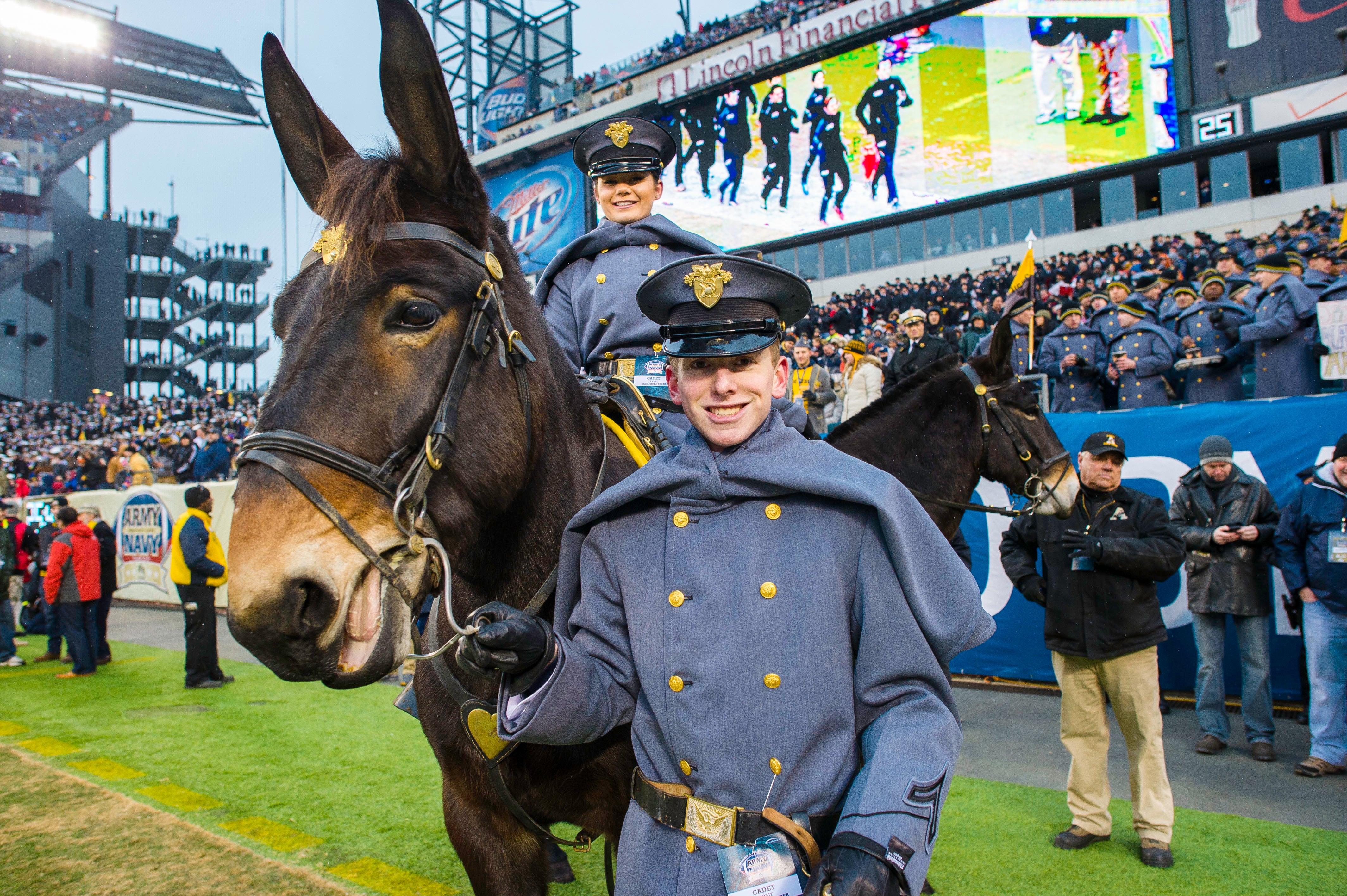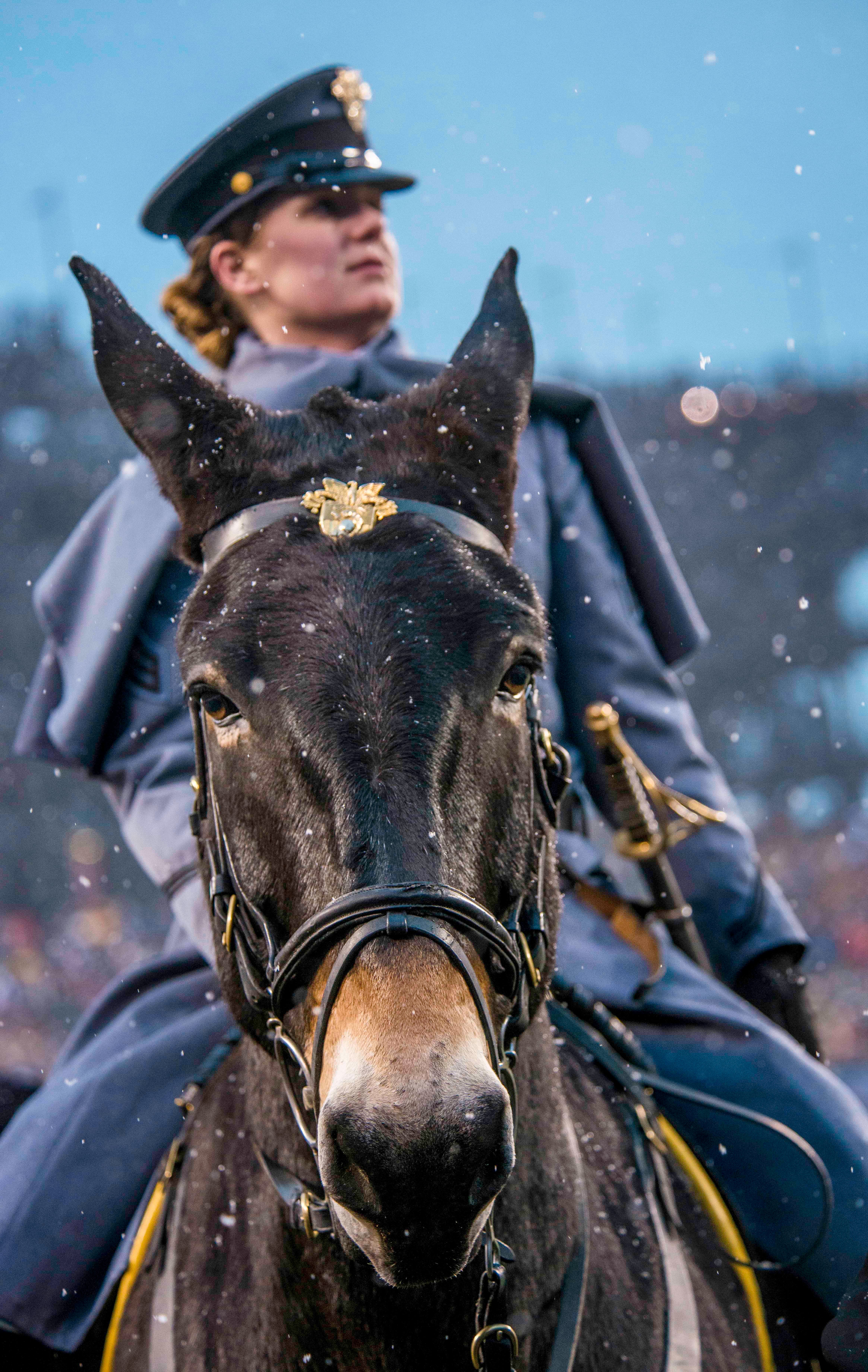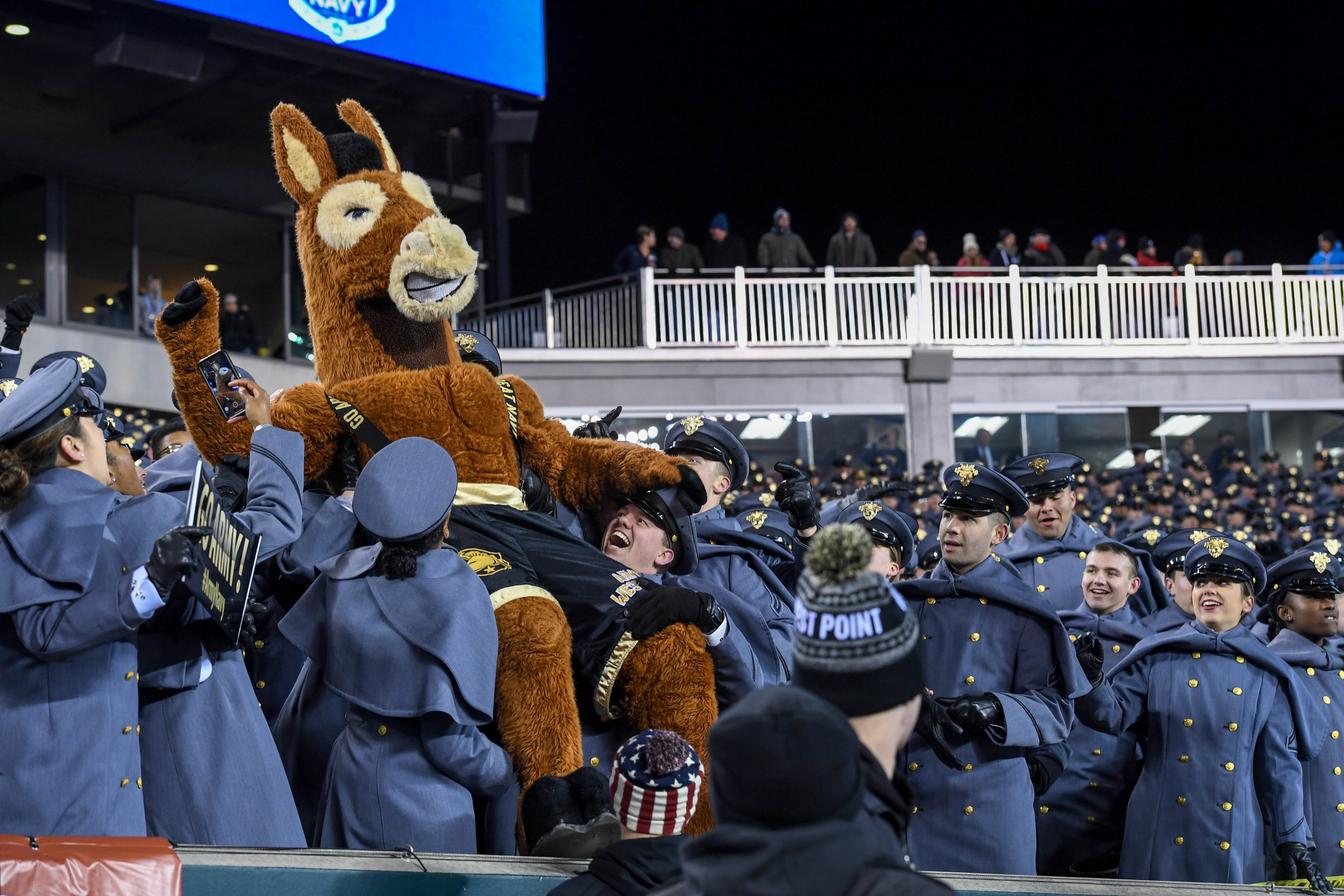West Point cadets went nearly a decade in their rivalry with the Naval Academy before adopting a mule as their school’s counterpart to the midshipmen’s goat.
But the horse and donkey hybrid has a lineage in Army service that predates this storied matchup — going back to 1890.
For centuries, armies had used mules as the engine of land operations, hauling guns, ammunition and supplies across the globe. The first U.S. Military Academy at West Point mule mascot, however, pulled an ice wagon before being enlisted to rally the Corps of Cadets as they cheered on their team, according to the West Point Association of Graduates website.
The Navy had brought their goat to the game since 1890. By 1899 an officer at the Philadelphia Quartermaster Depot took charge, taking an ice-wagon mule and outfitting the pack animal with a collar, leggings, and a gray blanket. Soldiers adorned the mule’s ears and tail with black, gold and gray streamers.
West Point legend has it that the first meeting of the two mascots ended rather colorfully. The mule “hoisted that astonished goat toward the Navy stands to the delight of the yelling, laughing crowd.”

This legendary meeting took place at the first Army-Navy Game held at Franklin Field, Philadelphia, Pennsylvania before a crowd of 25,000 and an Army victory of 17-5.
The mascot may play a role, as the Navy’s first use of its goat mascot 1890 resulted in a 24-0 victory for the “Mids.”
Cadets continued bringing a mule to the games over the ensuing years, as photos in the Academy’s annual publication, “The Howitzer,” show. But little else is documented on the mules who were selected to be mascots, though they were typically chosen from the stables at West Point.
That changed in 1936 when “Mr. Jackson” became the first officially designated mule mascot for West Point. A second mascot named “Pancho,” a small Ecuadorian burro, joined “Mr. Jackson” in his duties in 1939. Pancho, also called “Skippy” was a gift from the Ecuadorian Ambassador Colon Alfaro, who presented her to the Academy the same year his sons Eloy and Jaime graduated from the institution.
“Mr. Jackson” continued until 1948 while Army won two national championships and earned 83 wins, 28 losses and 19 ties over those 12 years.
During the 1942 Army-Navy Game, cadets disguised “Pancho” in a goat’s skin and horns with her rider dressed in a midshipman’s uniform.
The Ranger Association of World War II formally presented “Ranger I” to the Corps of Cadets during pre-game ceremonies at the Army-Virginia football game in 1978.
The mules are cared for entirely by cadets, according to the West Point website. Each year one Mule Rider is chosen from each of the incoming class of cadets, making a team of four that cares for the mules.
The currently serving mules are “Ranger III” and “Stryker,” who made their debuts in 2011. Mules can live as long as 40 years. The pair spent four years being conditioned for their West Point assignment, which involves learning to stay calm during raucous, loud events such as roaring fans, cannon fire and crowds of people milling nearby.
Former Army officer with the 75th Ranger Regiment, Steve Townes, a West Point Class of 1975 graduate and former mule rider and mule donor, said at the time that his only stipulation for providing the Academy a mule was that one of the West Point mules will always be named “Ranger” in honor of all Army Rangers.

Todd South has written about crime, courts, government and the military for multiple publications since 2004 and was named a 2014 Pulitzer finalist for a co-written project on witness intimidation. Todd is a Marine veteran of the Iraq War.





